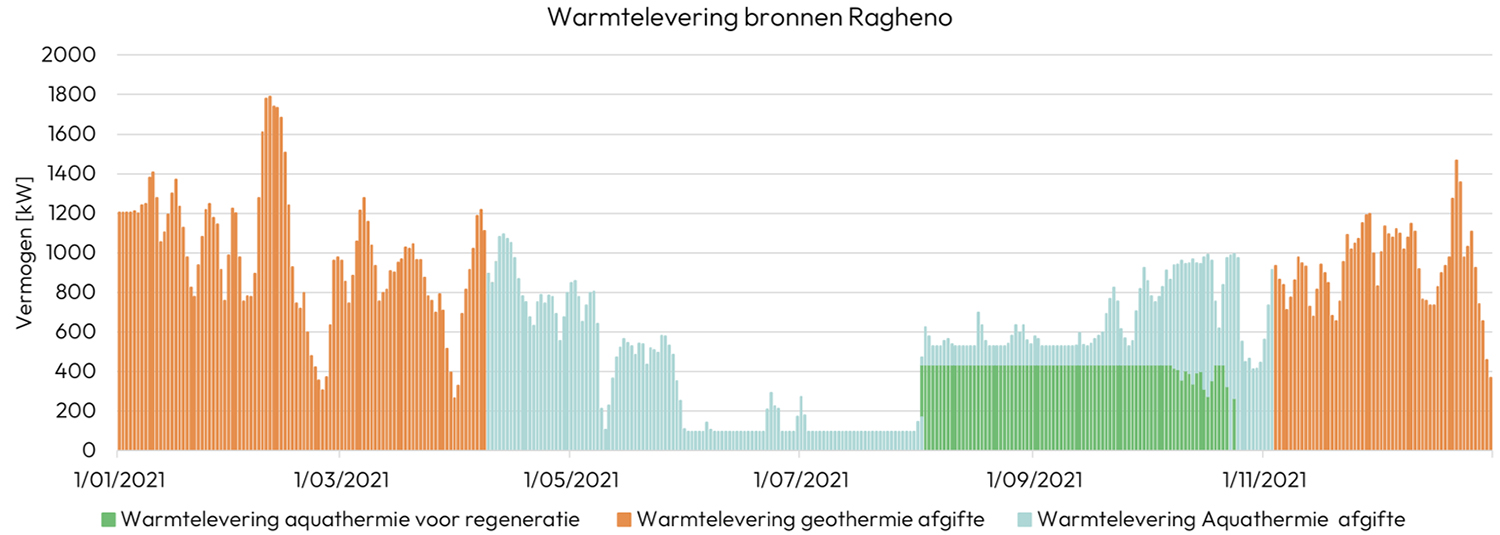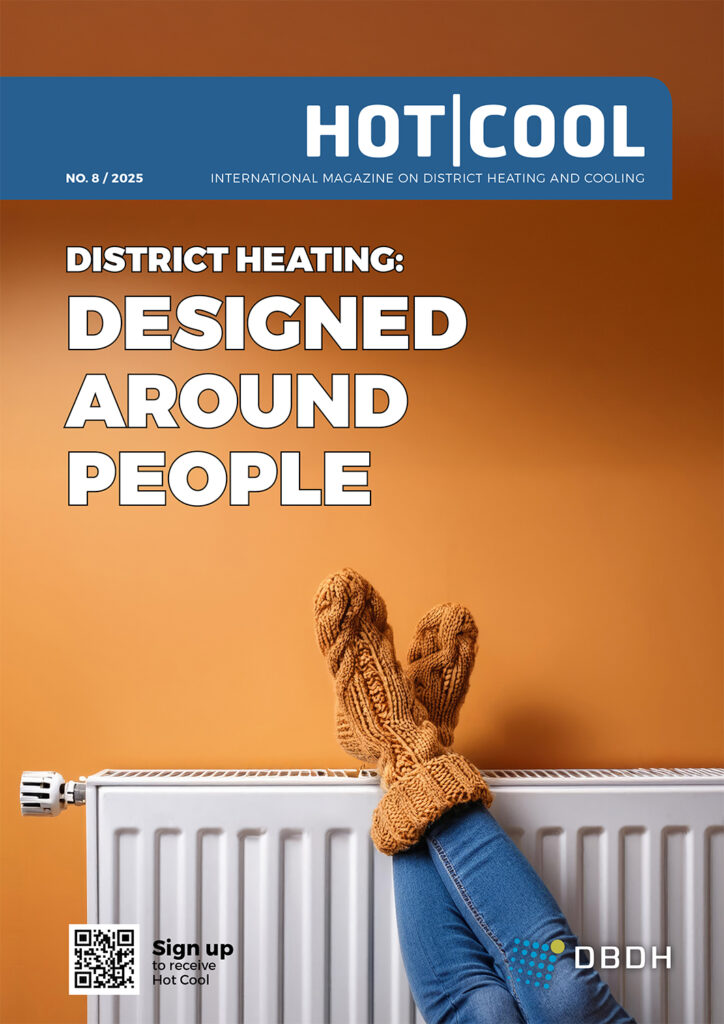What if heat networks could grow as naturally as plants – rooted in local resources, nourished by water, and expanding organically across cities?
In Flanders, the cities of Mechelen and Kortrijk are proving that it is possible. By tapping into aquathermal energy from rivers and canals, they are transforming urban redevelopment into an engine for the green transition.
From digital twins of waterways to low-temperature heat networks and new governance models, these projects show how cities can cultivate resilient, nature-inspired energy systems – and bridge the gap between heat planning and real-world implementation.
By Ighor Van de Vyver (City of Mechelen) and Lore Vander Plancken (City of Kortrijk)
Published in Hot Cool, edition no. 8/2025 | ISSN 0904 9681 |
This article looks into the Flanders region in Belgium. Heat planning and heat networks are still emerging practices in this area. A legal and supporting framework regarding heat planning has been in place since 2023. However, this framework is relatively young, and in practice, the majority of cities and municipalities are still lagging behind, as only 40 out of 300 have submitted a local heat plan¹.
Furthermore, in 2024, there were 99 heat networks in operation in Flanders, with 9.318 residential and 794 non-residential connections. Heat networks are only responsible for approximately. 872 GWh, or less than 1% of the total heat consumption in Flanders, indicating a low market uptake.
With the upcoming obligation for towns with over 45.000 inhabitants to prepare local heating and cooling plans with the EED recast, it is expected that heat networks will grow as plants in cities. In this article, we investigate whether this is the case, examining two cases that implement large-scale heat networks using aquathermal energy from rivers and canals as 100% decarbonised heat source.
Opportunities for heat networks in Kortrijk and Mechelen
The first case is located in Kortrijk. The city has developed a spatial energy plan, a heat zoning map, and conducted multiple feasibility studies for energy clusters at the district level.
The area known as ‘Buda Island’ is a promising and innovative energy cluster in Kortrijk, where redevelopment will be used as leverage to establish a heat grid based on aquathermal energy from the River Lys, complemented by a geothermal borehole thermal energy storage (BTES) system.
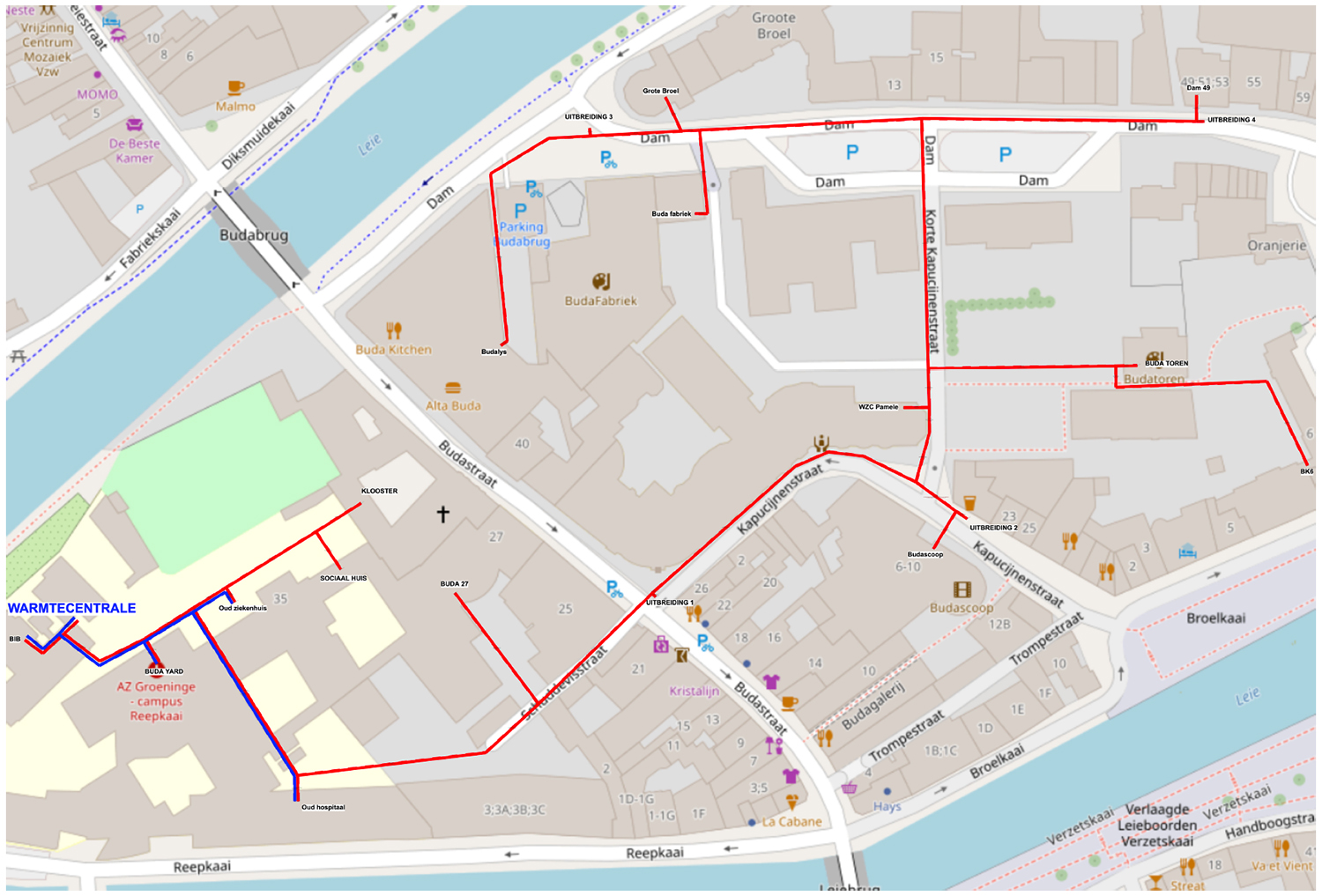
Figure 1: Conceptual design of the energy network. Credits: City of Kortrijk
The network will connect the redeveloped tip with the Heilig Hart care facility. Still, it has been dimensioned from the outset to eventually provide the entire island with fossil-free heat.
| Component | Characteristics | Actors |
|---|---|---|
| Supply | Multiple sources: Centralised heat pump using aquathermal energy from the River Lys (≈ 90% of the heat), shallow geothermal energy (BTES), and aerothermal energy | Water authority De Vlaamse Waterweg |
| Storage | Borehole Thermal Energy Storage (BTES) | Energy Company of Kortrijk |
| Network | Low temperature heat network (60 °C – 30 °C) | Energy Company of Kortrijk |
| Delivery | Collective multiple sources: 6-pipe CO₂ heat pump, 4-pipe AQUA/BTES, 4-pipe BTES heat pump | Energy Company of Kortrijk |
| Clients | Public buildings | City of Kortrijk, H. Hart Care Facility |
Table: Characteristics for the first branch of the Buda-island heat network in Kortrijk
The second case is located in Mechelen. The city adopted its municipal heat plan and established the heat coalition in 2024. For its decarbonisation efforts, Mechelen has been awarded the Covenant of Mayors Award in 2025. Right behind the central station and a stone’s throw from the city centre, lies the site of Ragheno.
The city has the ambition to redevelop this former brownfield into a new, sustainable, and attractive district. The masterplan is ambitious: 300,000 m² of housing (approximately 2,750 dwelling units), 125,000 m² of offices and services, 18,000 m² of commercial functions, and 17,600 m² of facilities.
Figure 2: Masterplan Ragheno. Credits: City of Mechelen
Figure 3: Conceptual scheme of the energy network. Credits: City of Mechelen
The aim of the city is to implement a very low-temperature heat network utilising aquathermal energy from the Canal Leuven-Dyle, combined with geothermal BTES, starting with a first cluster of newly built project developments. A similar network has been implemented in another area of Mechelen at the Keerdok site. This site recovers waste heat from the sewage water system in combination with BTES to provide clean heat to approximately 300 newly built residential units.
| Component | Characteristics | Actors |
|---|---|---|
| Supply | Centralised thermal unit with heat exchangers. Multiple sources: – Aquathermal energy from Canal Leuven-Dijle – Thermal energy from wastewater recovery – Thermal energy from drinking water recovery | Water authority De Vlaamse Waterweg Wastewater operator Aquafin Drinking water operator Pidpa |
| Storage | Underground Thermal Energy Storage (Borehole Thermal Energy Storage in private developments) | Private developers Third party |
| Network | Very low temperature heat network (15 °C – 35 °C) | Distribution System Operator Fluvius |
| Delivery | Decentralised collective ground-sourced heat pumps or decentralised individual ground-sourced heat pumps | Third party |
| Clients | Approx. 750–800 dwelling units Existing buildings and businesses | Private developers |
Table: Characteristics for the first branch of the Ragheno heat network in Mechelen
Unleashing the power of aquathermal energy
The key question is how to have heat networks grow like plants? It appears that in the cases of Mechelen and Kortrijk, it is simply a matter of providing sufficient water (in the form of aquathermal energy) to valorise the local renewable heat sources in large-scale infrastructure.
However, several additional and targeted activities needed to be conducted:
- In both cases, the potential of aquathermal energy has been analysed by the firm EXTRAQT, mapping the characteristics of the river (depth, flow, and flow variations of the waterbody, structure and material of the shore, bathymetry, water quality (temperature, salinity, turbidity, pollutant load)).
- Permitting and regulatory requirements were discussed with the water authority. The key takeaway was that aquathermal energy could only be used for heating purposes, not cooling. Therefore, a combination with geothermal BTES or ATES is recommended, as in this case, the BTES or ATES system can provide cooling. At the same time, it is regenerated in summer with aquathermal energy.
- Scenario and technical concepts have been investigated and compared in detail. In Kortrijk, a low-temperature heat network is in place, featuring a central heat pump plant. In Mechelen, there is a very low-temperature heat network with decentralised heat pumps, connected to multiple renewable heat sources.
Figure 4: Distribution of heat delivery in Ragheno, simulated for one year (2021). In winter, heat is provided by geothermal BTES (orange). For the rest of the year, it is more efficient to use aquathermal energy from the canal directly for heating (blue). From August to October, aquathermal energy from the canal is used to regenerate the BTES in addition to this (green). Credits: EXTRAQT
- Thorough thermal impact analyses were conducted on the river by the firm EXTRAQT, confirming that heat extraction is possible without harming the local ecosystem. For this purpose, digital twins of the waterbody were created to calculate the temperature difference in the waterbody caused by the potential installation, either 1-dimensional or 3-dimensional (using CFD simulations).
Figure 5: 3D-thermal impact simulation for Ragheno Mechelen during a critical month (October 2021) on two outlets (marina (orange) and canal (blue). The thermal impact is a maximum of 0.8 °C, which is below the maximum. Allowable threshold of 3 °C. Credits: EXTRAQT
- In both Mechelen and Kortrijk, additional and specialised expertise amongst its city services was a critical success factor. This “energy broker” negotiates with all stakeholders involved (policy-makers, project developers, heatnetwork operators, permitting authorities) and initiates the needed legal, financial, and technical studies;
- Regarding governance, it remains an open question which organisational structure is best suited for the network. Mechelen has selected DSO Fluvius as a partner for the distribution and will need to choose a party for heat supply and heat delivery. Kortrijk is establishing a local energy company.
- The spatial requirements of the heat network must be incorporated into the spatial master plan. In Kortrijk, suitable locations for the thermal plant have been identified, and the technical and financial impact has been assessed. In Mechelen, “heatnet-ready” provisions have been prescribed in the district’s spatial plan, requiring central technical rooms in newly built multi-family homes.
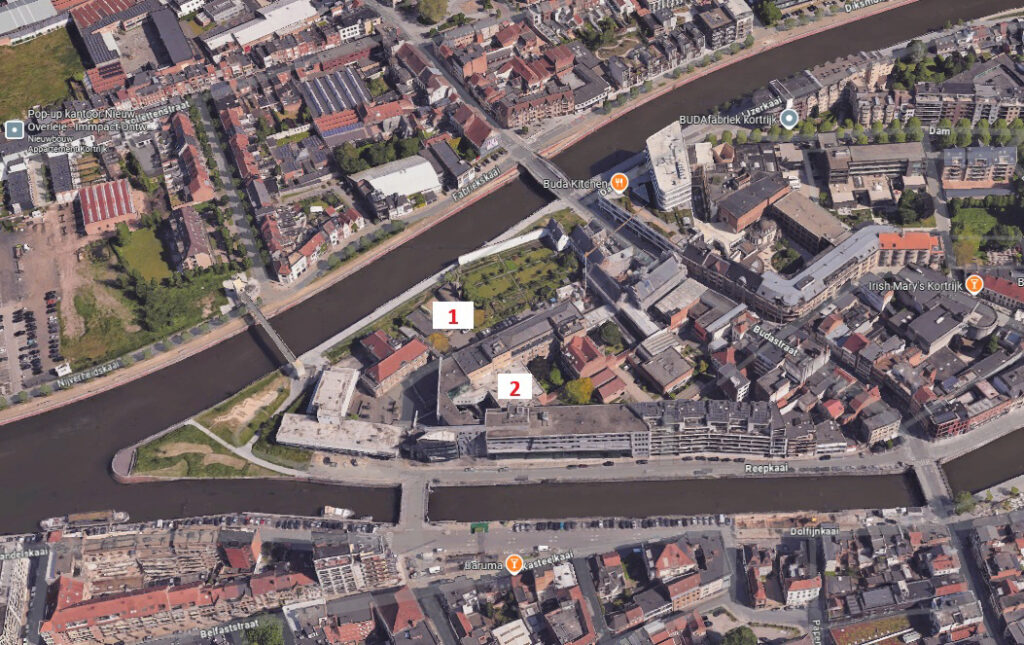
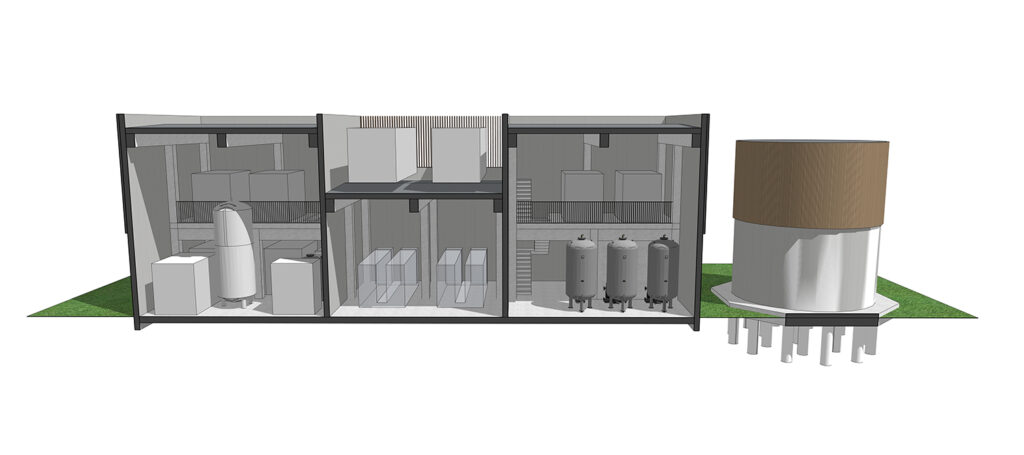
Figure 6: Potential locations for the heat plant (left) and impression of the heat plant room (right) for Buda-Island in Kortrijk. Credits: City of Kortrijk
In both cases, the redevelopment of large urban areas acts as a lever to accelerate the energy transition. This also means that the timing and phased implementation are crucial; the timelines of both the urban renewal project and the heat network need to match. Furthermore, while the focus could initially be on a small area as the root for the heat network, it needs to be designed with the final picture in mind, if the vision is to expand and cover the whole district.
Tackling the implementation gap from heat planning to heat networks
The cases reveal four key elements that need to be tackled to have heat networks grow like plants in Flanders:
- A framework for technical and financial assistance for project development of heat networks, to make sure that heat zoning plans and energy master plans lead to the development and construction of actual heat network projects. To transition from a detected project opportunity to actual investment plans, resources are required to launch and follow up on technical, financial, and legal studies.
- In addition, effective regulation and processes will be necessary to address the ‘implementation gap’ between planning and project development. An example is the ban on gas connections in new-built project developments introduced in 2022, but this risks resulting mainly in stimulating individual air-sourced heat pump systems, unless backed up with other supporting regulations and financial incentives for district heating and cooling.
- This may require a better alignment between the Flemish and local levels for both energy planning and building permitting processes. Although both cities have a clear local vision, with a municipal heat plan adopted and an energy masterplan for the site, the energy performance regulation does not require any consultation or alignment with these planning instruments, as it must be submitted directly to the Flemish Energy Agency.
- However, even with technical, financial, and regulatory support at both local and supra-local policy levels, structural funding will be needed to unlock long-term investments in heat networks. A key condition is that this structural funding is accessible for local authorities in various stages of heat network development.
These elements stress the need for a governance setup between multiple policy levels, which allows for the development of policy instruments and processes with input from learnings and experiences encountered during heat network projects, and vice versa, ensuring that heat network projects align with a long-term vision or policy ambition. A very promising initiative in this regard is the policy working group on Aquathermal Energy, which was launched in 2022 under the umbrella of the Flemish Commission for Integral Water Management. A sub-working group, with Mechelen and Kortrijk representing local authorities, focuses explicitly on aligning spatial and energy policies on various policy levels.
This article was written within the framework of the EU project WaterWarmth, funded by the Interreg North Sea Region programme with financial support from the Province of Antwerp, Belgium.
Read more about the WaterWarmth project here.
¹ https://www.inspiratiekaartwarmtezonering.be/ accessed on 25.06.2025
For further information, contact: ighor.vandevyver@mechelen.be
“How to grow heat networks like plants in Flanders” was published in Hot Cool, edition no. 8/2025. You can download the article here:
Did you find this article useful?
Subscribe to the HOT|COOL newsletters for free and get insightful articles on a variety of topics delivered to your inbox twice a month!



